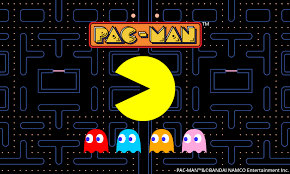Tech
Pac-Man 30th Anniversary: Celebrating Three Decades of Gaming Legacy

As we celebrate the 30th anniversary of Pac-Man, it’s an opportune moment to look back at the monumental impact this game has had on the arcade and video gaming industry. Introduced to the world in 1980 by Namco, Pac-Man quickly transcended its arcade game status to become a cultural icon, influencing not just the gaming industry but also pop culture at large. The game’s innovative design, engaging gameplay, and universal appeal have cemented its place in the annals of gaming history.
The Genesis of Pac-Man
The inception of Pac-Man dates back to 1980, when Toru Iwatani, a game designer at Namco, sought to create a game that diverged from the prevalent themes of violence in video games at the time. Iwatani’s vision was to design a game that could appeal to a wider audience, including females, which led to the birth of Pac-Man. The character’s design, a yellow circle with a mouth, was inspired by a pizza missing a slice. This simple yet innovative concept broke new ground in the gaming industry, introducing a maze chase genre that was unlike anything seen before.
Gameplay That Revolutionized the Industry
Pac-Man’s gameplay was a departure from the norm, focusing on a maze that the titular character had to navigate while consuming dots and evading ghosts. The game’s mechanics were simple yet addictive, offering a level of strategy that engaged players of all ages. Its non-violent, maze-chase gameplay was a breath of fresh air and played a significant role in expanding the video game market by attracting a demographic beyond the traditional young male audience.
Cultural Impact and Expansion
Pac-Man’s influence extended beyond the arcade screens, permeating pop culture and becoming a global phenomenon. The game spawned a wide array of merchandise, including lunch boxes, T-shirts, and even a hit song, “Pac-Man Fever,” which climbed the charts in 1982. Furthermore, Pac-Man introduced the concept of gaming mascots, paving the way for other iconic characters like Mario and Sonic the Hedgehog. The game’s success led to numerous sequels, spin-offs, and adaptations across various platforms, showcasing its enduring popularity.
The Legacy Continues
Three decades on, Pac-Man remains a beloved classic, with its 30th anniversary commemorating a legacy that continues to influence the gaming industry. The game has been re-released on multiple digital platforms, allowing new generations to experience its charm. Celebratory events, special editions, and merchandise releases have marked the anniversary, highlighting the game’s ongoing relevance and appeal.
Pac-Man’s impact on the gaming industry is undeniable. It introduced innovative gameplay mechanics, broadened the gaming audience, and established the concept of a gaming mascot. As we celebrate its 30th anniversary, Pac-Man’s legacy is a testament to its revolutionary impact, not just as a game but as a cultural phenomenon that transformed the gaming landscape.
Conclusion: An Evergreen Legacy
As we reflect on the Pac-Man 30th anniversary, it’s clear that its influence is as strong today as it was in 1980. Pac-Man’s innovative design, engaging gameplay, and cultural impact have made it a timeless classic that continues to enchant players around the world. Its legacy extends beyond the confines of gaming, symbolizing a pivotal moment in the evolution of digital entertainment. As we celebrate this milestone, Pac-Man’s journey from a simple arcade game to a global icon reminds us of the transformative power of creativity and innovation in the gaming industry.
Read Also: Investment FintechZoom: Navigating the Future of Financial Technology


















